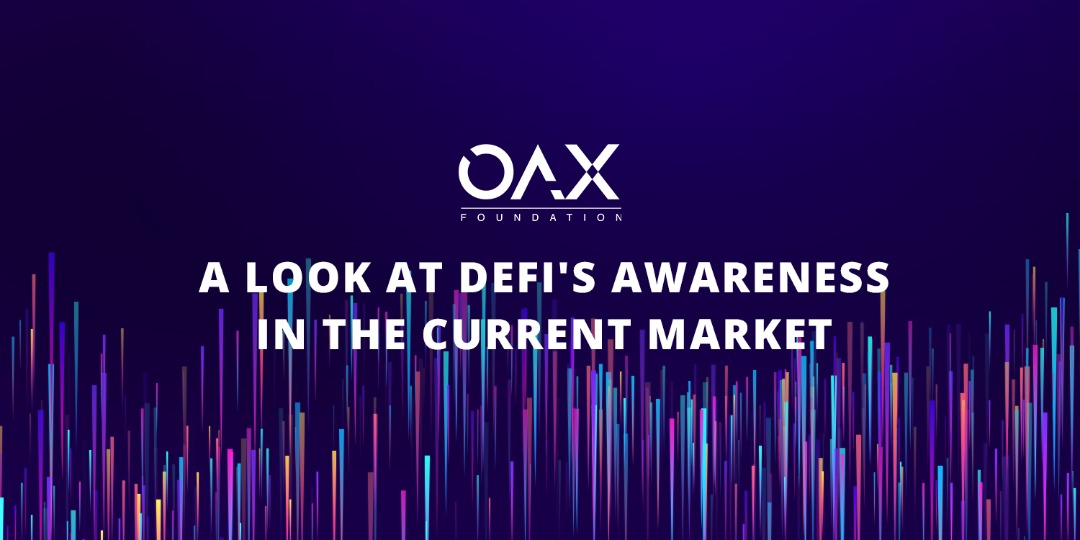
A Look at DeFi’s Awareness in the Current Market
While the world continues to manage the transition back to full economic activity, developers are working to deliver on their visions of a blockchain-enabled future. Measuring this activity can be challenging, but a recent survey by Coingecko raises some interesting points about DeFi.
Amongst those surveyed, awareness of DeFi ranks high, but usage remains low: 60% of respondents are familiar with DeFi, while 29% have heard of it but know little more about it. Only 11% are totally unaware of DeFi’s existence. Going a little deeper, the research shows that among the various elements that comprise DeFi, decentralized exchanges and Ethereum wallets are most recognised. Decentralized lending also received high recognition.
Looking at practical applications of DeFi, the research shows that those more familiar with DeFi are also more comfortable with relinquishing formal banking – 54%, compared to 28% among those who have heard of DeFi but know little else, and 19% of those who have never heard of DeFi.
This means that DeFi has yet to provide a compelling reason for people to use it, even if they are actively looking to use DeFi. Those who have heard of DeFi but know little about it have no reason to look for products to use. Across both groups, it’s clear that the broader market still requires education about specific products as well as the basic principles underlying them.
Two milestone developments that may help garner wider attention and understanding of blockchains in general and DeFi in particular are the much-anticipated launch of Ethereum 2.0 and the rapid progress being made by interoperability innovator Polkadot.
Ethereum plans a shift in its consensus mechanism from Proof of Work (PoW) to Proof of Stake (PoS) – a major step. As we know, the PoW consensus model, originally created by Satoshi Nakamoto as the enabling mechanism for Bitcoin, requires considerable time and investment for miners to maintain the chain as they pursue block rewards.
This issue poses a significant limitation on blockchain scalability and accessibility – and scalability is key to universal adoption of blockchain-based services, including DeFi. PoS decouples the consensus process from power consumption, lowering the economic barrier to entry and removing the throttle on upscaling the network.
As almost all DeFi offerings currently run on Ethereum, the implications across the board are significant. Broadly speaking, Ethereum 2.0 will probably drive more utility for those who are aware of the promise of DeFi because they are already engaged in the system. But what of awareness for those outside it who have no interest in consensus mechanisms?
With Polkadot, we will gain the ability for different, independent blockchains to interact seamlessly, as well as being open to new applications still under development. By linking chains that currently operate independently, this greater integration will also drive easier scalability and accessibility while retaining the constituent chains’ security.
Polkadot also enables upgrades to be made without the need for hard forks, which have proven to be challenging and time-consuming events for blockchains actioning significant changes. And it promotes the creation of more specialist services through its ability to be optimised according to the specific demands of various applications.
Polkadot launched their Mainnet candidate on 26 May and a number of partner organisations are busy building applications based on its protocols – including DeFi solutions. These promise to address the issues raised in the poll data by enabling more cross-chain communication, driving better customisation of services and easier transfers of information, including coins and other assets.
Theoretically, the greater utility and scalability driven by innovations like Ethereum 2.0 and Polkadot will help to promote awareness among the many whose sole interest is useable DeFi products and services without needing to know more about how they work.
Looking further, while Ethereum 2.0 and Polkadot are probably the most high-profile developments currently under way, they’re happening against a background of the many more developers currently working on numerous variations of blockchain-enabled products and services. It’s a healthy situation when this amount of intellectual and financial capital is focused on similar goals – even when many of the projects are in competition with each other.
Every new development propels us all forward, which in the long run is beneficial for the ecosystem as a whole – and for the consumers who will ultimately benefit through more choice, better services, and lower barriers to entry. Further reinforcement of this this healthy situation comes with the demographic findings in the survey. With women comprising just 9% those showing an awareness of DeFi compared to men at 89%, it’s clear that education and adoption initiatives designed for women will yield significant returns.
Similarly, the age-group data shows that Millennials make up the majority of those aware of DeFi, at 68%. This is unsurprising, but suggests that significant progress would be made by educating those over 40 – those with established financial arrangements who need convincing that they can change – and those under 20, who have yet to adopt the financial services and products they will use into the future.
For the organisations busy developing DeFi applications, taking note of the insights provided by poll data and keeping a keen eye on potentially significant developments like Ethereum 2.0 and Polkadot not only provides actionable inputs, but also reminds us that we’re part of something bigger, with a future we believe is bright – both for us, and the consumers who may not know about us yet.


